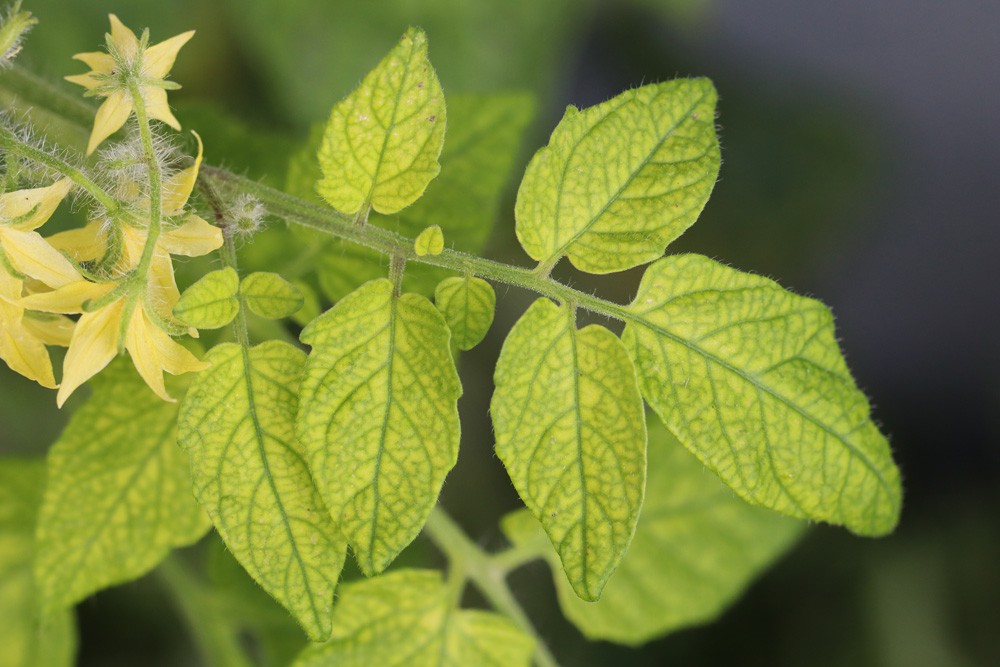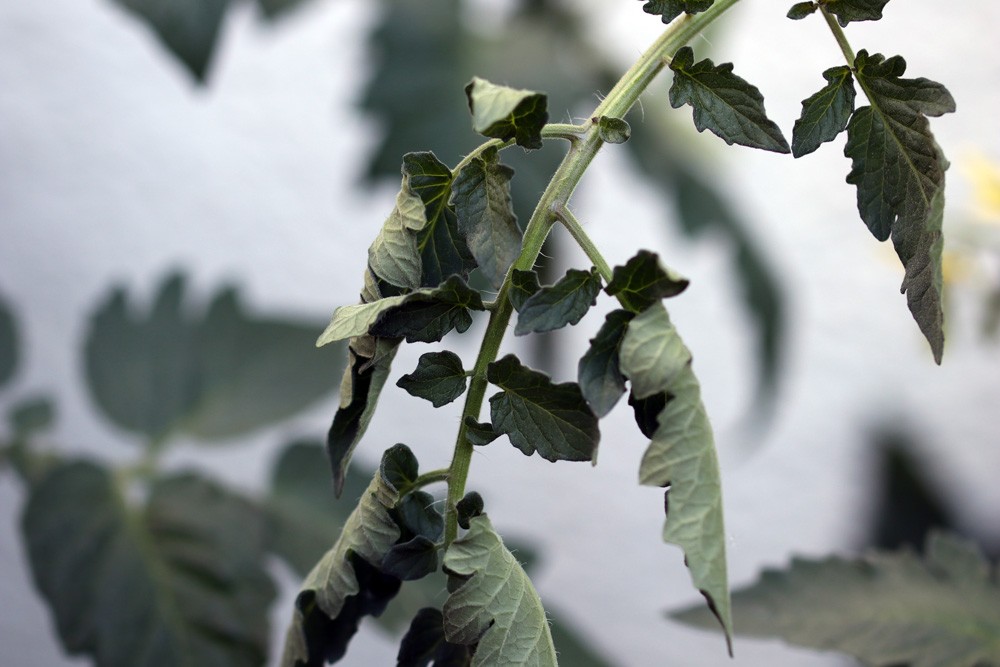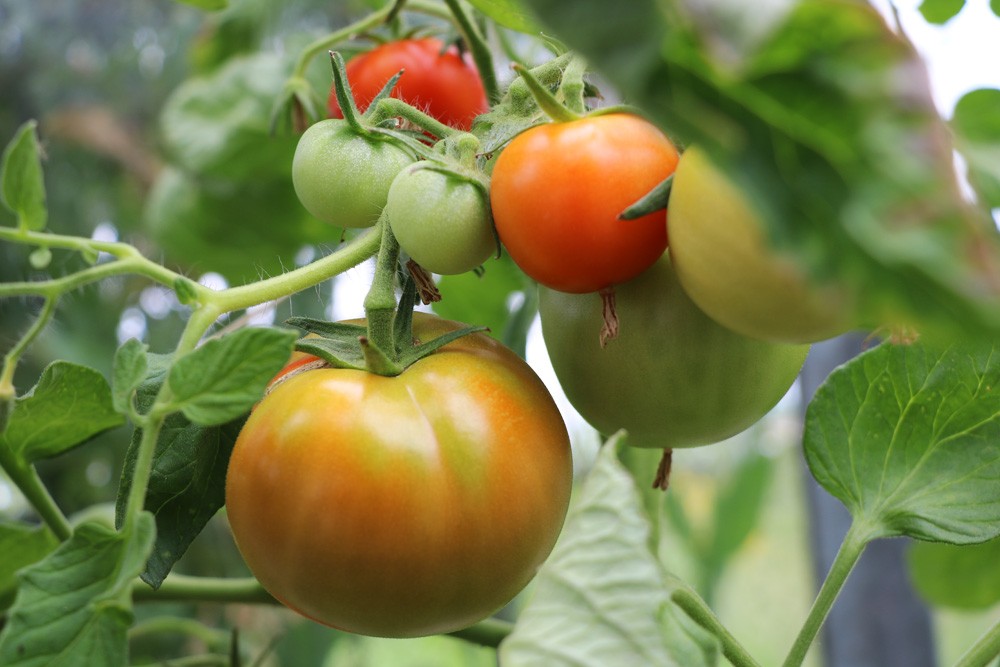Tomatoes should always be watered from the bottom, but why actually? Learn here why the tomatoes do not like wet leaves and what the risks of watering from above!
Tomatoes like it moist, however, they do not like waterlogging or wet leaves. In particular, wet foliage poses great risks, because the moisture favors quite a few pathogens. If you want to care for and protect your tomatoes in the best possible way, you should therefore always make sure that there is no splashing water on the leaves. We explain the possible risks and also give you tips on how best to water the tomatoes.
Why water tomatoes from below?
Tomatoes should (if possible) always be watered from below, directly in the root zone. Because in this way the water reaches without detours where it is needed, namely to the roots. But not only the water supply speaks for watering from below, because this kind of watering also reduces the risk of splashing water. The water droplets that splash away may seem inconspicuous, but they do promote pests and diseases:
- Water droplets act like a magnifying glass and intensify the sun’s rays
- Plants could get sunburned
- moisture favors diseases
- Fungi and pathogens can be present in the irrigation water
Diseases
Tomatoes contract a wide variety of diseases, however, some can be prevented by watering from below. This is because many pathogens are transmitted not only by wind, but also by rain and/or irrigation water. In addition, moisture promotes their spread. The following diseases, among others, can be prevented by watering tomatoes from below:
Late blight

Blight is particularly feared because it spreads extremely quickly and can literally destroy the plants. This disease can be recognized by gray-green spots on the leaves, which later turn gray to black. In addition, a grayish-white fungal lawn forms on the underside of the leaves, and brown, hard spots become noticeable on the fruit.
- often overwinters on infested potato tubers
- transmission by wind and irrigation to tomatoes
- temperatures between 18-20 degrees ideal for the fungus
- humid, warm weather favors spreading
- spores germinate during prolonged leaf wetness
Gray mold
Gray mold mostly affects tomatoes that are cultivated in greenhouses. The disease is noticeable by large gray spots on the leaves and stems. As the disease progresses, this spore lawn spreads further and further and the fruit dries out.
- Pathogen can survive in the soil for several years
- waits until optimal conditions for infection are given
- high humidity, ideally above 85 percent
- temperatures between 22-25 degrees
- spores spread by wind and irrigation
Note: At 93 percent humidity and temperatures between 10 to 20 degrees, gray mold can infect a plant within 30 seconds.
Velvet spot disease

In velvet spot disease, gray-green spots form on all parts of the plant, which over time become covered with a gray lawn of spores. The disease occurs particularly often in greenhouse tomatoes, as the protected environment provides ideal conditions for the pathogen to spread:
- Pathogen survives on infected fungal material in the soil.
- infection by spore influx
- favored by persistent high humidity
- especially if the plant surface does not dry out
- temperatures of about 20 degrees are optimal
- Humidity above 80 percent
Powdery mildew
Powdery mildew is also particularly feared because it is not treated chemically in home and small gardens. The disease is noticeable by a white fungal coating on the leaves and stems, which in the further course can cover the entire leaf. Often the leaves also turn yellowish to brown. Humidity also favors powdery mildew and spreads it particularly well under the following conditions:
- Temperature between 16-22 degrees
- Humidity of 70-80 percent
- spore transmission by wind and insects
- spreads even in dry conditions
Bacterial wilt

Bacterial wilt is a quarantine disease that must be reported to the relevant state plant protection service. An infestation is only noticeable by the wilting of individual leaflets and brown discolored conductive tracts. However, the entire plant is not always affected, because it can happen that, for example, the upper part of the plant is still completely healthy. Bacterial wilt is also favored by moisture and spreads as follows:
- Pathogens persist in the soil for a long time.
- spread via bacterial slime
- among other things by means of water droplets
- transmission also possible through seeds
- withered roots promote the disease
Avoid splashing water
Splashing water on tomatoes can be avoided by watering them properly, whereby watering from below is particularly essential. However, if you want to be on the safe side, you can use a few tricks. Here, different utensils are placed next to the tomatoes in the soil, which then act as a water reservoir. Among other things, the following methods have proven successful for this purpose:
- PET bottles
- small pots
- Watering rings
Tip: Potted tomatoes are best planted in containers with an integrated water reservoir. This can usually be filled easily so that the tomato leaves are not moistened.


